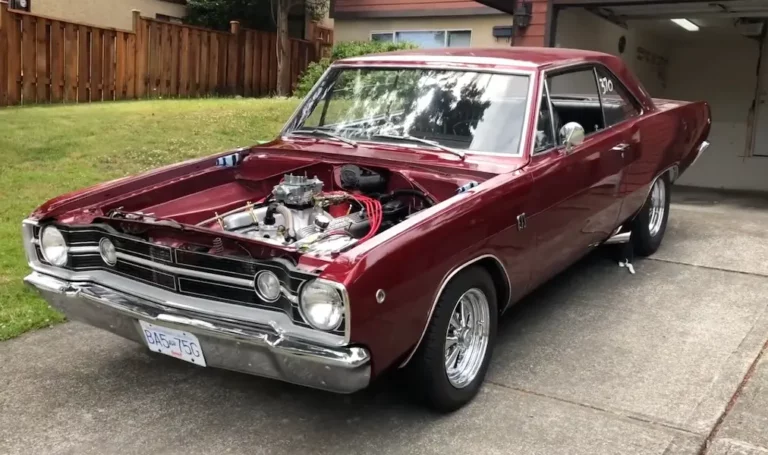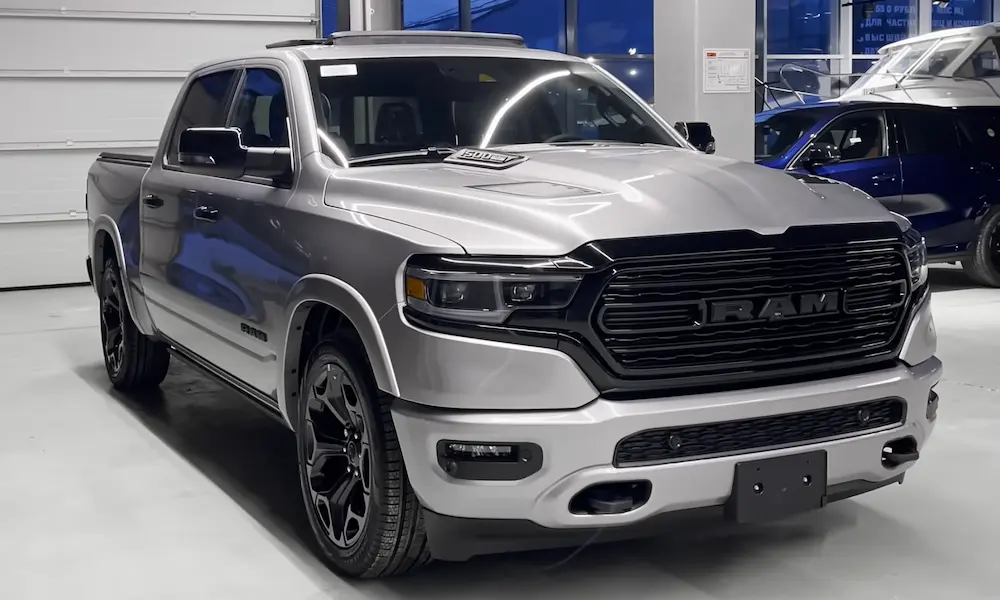You’re looking at one of Chrysler’s most versatile and enduring V8 engines. The Dodge 360 engine powered everything from muscle cars to pickup trucks, and continues to be a favorite among enthusiasts today. This guide breaks down everything you need to know about this iconic 5.9-liter powerplant.
What Is the Dodge 360 Engine?
The Dodge 360 engine is a 5.9-liter (360 cubic inch) V8 that was part of Chrysler’s LA engine family, later evolving into the Magnum series. First introduced in 1971, this engine became known for its robust design, impressive torque, and remarkable adaptability across multiple vehicle platforms.
With a 4.00-inch bore and 3.58-inch stroke, the 360 engine hit a sweet spot between the smaller 318 and larger big-block engines. It featured cast iron block and heads with an overhead valve design that prioritized low-end torque – perfect for trucks and larger vehicles.
Dodge 360 Engine Specs: Key Technical Details
Let’s break down the nuts and bolts of what makes this engine tick:
| Specification | Details |
|---|---|
| Displacement | 5.9L (360 cubic inches) |
| Configuration | 90° V8 |
| Block/Heads Material | Cast iron |
| Bore × Stroke | 4.00″ × 3.58″ (101.6mm × 90.9mm) |
| Compression Ratio | 8.0:1 to 9.1:1 (varied by year/application) |
| Valvetrain | OHV (2 valves per cylinder) |
| Firing Order | 1-8-4-3-6-5-7-2 |
| Oil Capacity | 5 quarts (4.7L) |
This engine was never the most powerful in Chrysler’s lineup, but its combination of respectable power and legendary durability made it a popular choice for decades.
The Evolution of the 360: From LA to Magnum
The 360 engine underwent significant changes throughout its production run, with two distinct generations worth examining.
The Original LA 360 (1971-1991)
The LA designation stood for “Light A,” as this engine family was about 50 pounds lighter than Chrysler’s previous A-series V8s. When the 360 debuted in 1971, it delivered 255 gross horsepower (about 190 net hp) and 360 lb-ft of torque.
Early carbureted models came with either:
- Two-barrel carburetors for economy applications
- Four-barrel setups for performance variants
The 1970s emissions regulations hit this engine hard, with power output dropping significantly. However, the 1978-1979 Dodge Lil’ Red Express Truck became a notable exception, using high-flow exhausts and special tuning to deliver 225 net horsepower when most V8s were struggling to hit 200.
Performance gradually improved with technological advances, with the 1987 addition of roller lifters being a significant upgrade for reducing friction and improving longevity.
The Magnum 360 (1992-2003)
In 1992, Chrysler breathed new life into the 360 with the Magnum update. These modernized engines featured:
- Sequential multi-port fuel injection replacing carburetors
- Redesigned cylinder heads with improved airflow
- Roller camshafts for reduced friction
- Better intake and exhaust flow
- Revised combustion chambers
These changes boosted output to 230-245 horsepower and 330-345 lb-ft of torque, with peak performance hitting 245 hp at 4,000 RPM and 345 lb-ft at 3,250 RPM in later Jeep Grand Cherokee applications.
Performance Through the Years
The Dodge 360 engine’s output varied significantly throughout its production run. Here’s how it evolved:
1971-1979: The Carbureted Era
Initial output was strong for the time, but emissions regulations quickly changed the landscape:
- 1971: 255 gross hp (190 net) and 360 lb-ft
- Mid-1970s: Power dropped significantly due to smog regulations
- 1978-1979 Lil’ Red Express: 225 hp and 295 lb-ft (a bright spot during the emissions crunch)
1980-1991: The Transition Period
During this era, the 360 was primarily used in trucks with fairly consistent output:
- Approximately 200 horsepower
- Around 290 lb-ft of torque
- Passenger car applications largely disappeared
1992-2003: The Magnum Renaissance
The Magnum update revitalized the 360’s performance credentials:
- 1993-1997: 230-245 hp and 330-345 lb-ft
- 1998-2003: Peak output of 245 hp and 345 lb-ft in Jeep applications
Vehicles Equipped with the 360 Engine
This versatile V8 found homes in a remarkably diverse range of vehicles over its three-decade production run.
Cars and SUVs
- Chrysler Newport (1971-1978)
- Dodge Charger (1971-1978)
- Plymouth Fury (1971-1978)
- Jeep Grand Cherokee (1993-1998)
Trucks and Vans
- Dodge D/W Series pickups (1974-1993)
- Dodge Ram pickups (1994-2003)
- Dodge Ram vans (1974-2003)
- Dodge Dakota (1993-2003)
Special Models
- Dodge Lil’ Red Express Truck (1978-1979)
- Dodge Warlock (1977-1979)
The 360’s torque-focused design made it particularly well-suited to trucks and larger vehicles, where its pulling power was more valuable than high-RPM horsepower.
Common Problems and Reliability Issues
Despite its reputation for durability, the 360 isn’t without its quirks and common issues:
Oil Consumption
High-mileage 360 engines (typically over 150,000 miles) often develop valve guide seal wear or piston ring issues that can lead to increased oil consumption—sometimes requiring a quart every 1,000 miles. This is generally considered normal for these engines at advanced age.
Hydraulic Lifter Noise
Lifter noise or “ticking” can occur due to sludge buildup or wear. Regular oil changes help prevent this issue, but many 360 engines develop some valve train noise as they age.
Rear Main Seal Leaks
The original LA engines were somewhat prone to rear main seal leaks. The Magnum series improved this with redesigned rear caps, but it remains a potential issue on high-mileage engines.
Compression Standards
When evaluating a used 360 engine, keep these compression benchmarks in mind:
- Minimum 100 psi per cylinder (measured with warm engine, throttle open)
- Maximum 40 psi variation between cylinders is acceptable
Modification Potential: Unleashing More Power
The 360 engine responds exceptionally well to modifications, which is one reason it remains popular with enthusiasts today.
Bolt-On Performance Gains
Dyno testing shows impressive gains from relatively simple modifications:
- Upgraded air intake: +6 horsepower
- Four-barrel carburetor conversion: +39 horsepower over stock two-barrel setups
- Long-tube headers: +30 lb-ft in midrange torque
More Extensive Modifications
For those willing to dig deeper:
- Aftermarket camshafts with 0.480″ lift can significantly improve top-end power
- Aluminum cylinder heads (like Edelbrock Performers) flow 240 cfm compared to stock’s 180 cfm
- Stroker kits can increase displacement to 408 cubic inches using a 4.00″ stroke crankshaft
Electronic Tuning
For Magnum engines with electronic fuel injection, modern ECU tuning can yield 15-20 horsepower gains with no other modifications, simply by optimizing spark timing and fuel delivery.
Maintenance Tips for Longevity
With proper care, a 360 engine can easily exceed 200,000 miles. Here’s how to keep yours running strong:
Regular Oil Changes
Use 10W-30 oil for most applications and change every 3,000-5,000 miles. More frequent changes help prevent sludge buildup that can cause lifter issues.
Cooling System Maintenance
The 360 operates best at around 195°F (90°C). Ensure your cooling system is maintained with:
- Fresh coolant every 2-3 years
- Thermostat inspection during coolant changes
- Water pump replacement at any sign of leakage or bearing noise
Valve Adjustments
Unlike some engines with hydraulic lifters, the 360 rarely needs valve adjustments unless you’ve installed aftermarket components. Let your ears be your guide—increased valve train noise might indicate adjustment is needed.
The 360’s Legacy and Collectibility
The Dodge 360 engine bridged the gap between Chrysler’s muscle car era and modern fuel-injected powertrains. Its production spanned from 1971 to 2003, making it one of Chrysler’s longest-running V8 designs.
Today, well-maintained examples of Magnum 360-equipped vehicles like the final-generation Jeep Grand Cherokee and Dodge Ram trucks are gaining appreciation among collectors. The engine’s robust design, plentiful parts availability, and strong aftermarket support ensure it will remain a popular choice for restoration projects and hot-rodding applications for decades to come.
Enthusiasts particularly seek out the 1978-1979 Lil’ Red Express trucks and early high-output LA engines for their historical significance, while the later Magnum engines offer the best balance of power, reliability, and modernized design.
Should You Choose a 360 for Your Project?
If you’re considering a 360 for your project vehicle or replacement engine, here’s what makes it appealing:
Strengths
- Exceptional torque for its size
- Simpler design than modern overhead cam engines
- Outstanding parts availability
- Excellent aftermarket support
- Proven durability
- Can be built to produce 400+ horsepower with the right modifications
Considerations
- Fuel economy is not its strong suit
- Heavier than aluminum modern V8s
- Later fuel-injected versions require more electronic expertise
For truck applications or classic Mopar restorations, the 360 remains one of the most practical and rewarding engine choices available. Companies like S&J Engines even offer complete crate engine replacements that deliver 245 horsepower in turnkey packages.
How the 360 Compares to Other Mopar V8s
To understand the 360’s place in Chrysler’s engine lineup, it helps to compare it to its siblings:
| Engine | Displacement | Key Characteristics | Best For |
|---|---|---|---|
| 318 LA/Magnum | 5.2L (318ci) | Better economy, similar design | Daily drivers, moderate towing |
| 360 LA/Magnum | 5.9L (360ci) | More torque, still compact | Trucks, SUVs, performance builds |
| 383 B-Series | 6.3L (383ci) | Big-block design, heavy | Classic muscle cars, heavy towing |
| 5.7L Hemi | 5.7L (345ci) | Modern replacement, more power | Modern performance, efficiency |
The 360 hits a sweet spot between the smaller 318 and larger big-blocks, offering substantial power in a package that still fits comfortably in most engine bays.
The Dodge 360 engine represents a fascinating chapter in American V8 history—evolving from carbureted muscle car power to fuel-injected truck sophistication while maintaining its essential character throughout. Whether you’re restoring a classic Mopar, building a hot rod, or just appreciating automotive history, the 360 deserves its place among the most versatile and enduring engines of its era.















